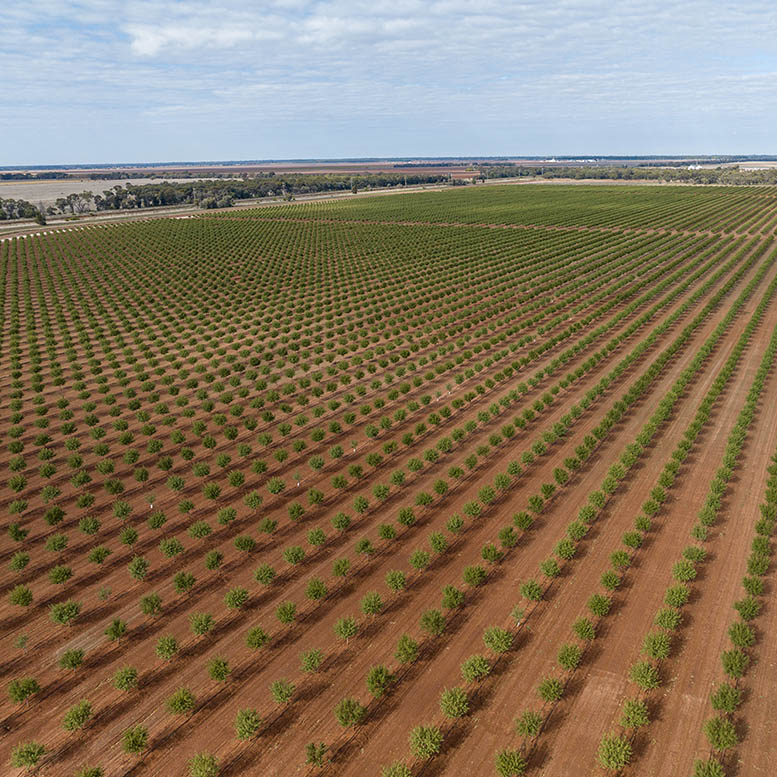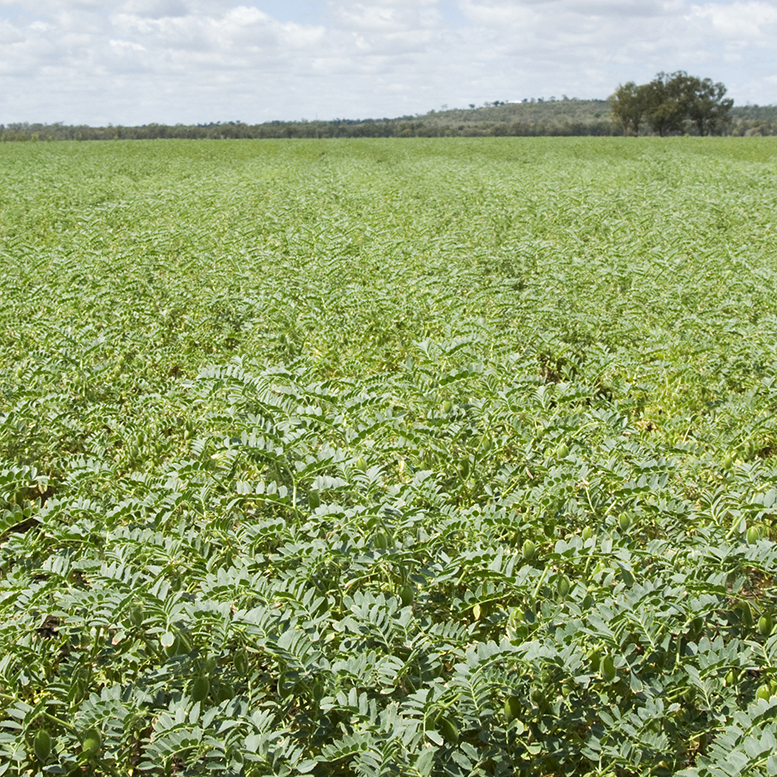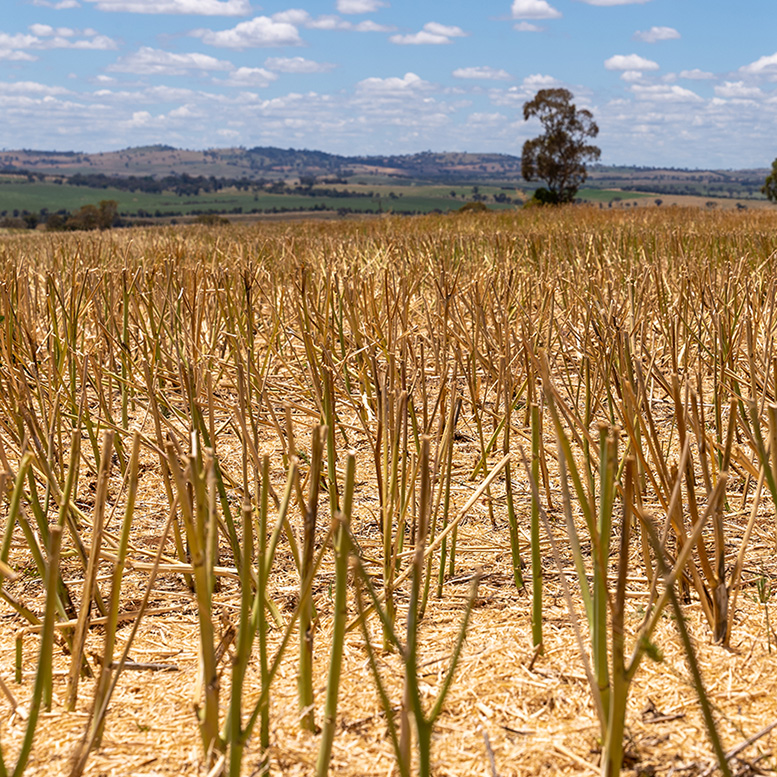Agronomic Insights

David McRae – IPF Technical Agronomist
Non-yield limiting application rates of nitrogen (N) are generally employed by most growers and agronomists to produce high yielding cotton and summer crops. Over application of N can lead to lower nitrogen use efficiency (NUE) and significant losses of N as greenhouse gases. Holding N in the ammonium form with Nitrification Inhibitors (NI) until it is required by the crop can maintain or improve crop yields and may reduce required N fertiliser rates through reducing losses. This also lowers the environmental impact and supports grower profitability.
Higher-yielding cotton and summer crops normally require the application of N fertiliser to optimise lint and grain yields. Growers and agronomists understand that under fertilising with N or other nutrients will reduce their profitability and they ensure crop yields are not limited by nutrient deficiencies.
However, implementing non-limiting N strategies can lead to high or excessive rates of applied N when inefficiencies and loss factors are not properly accounted for or understood. High rates of N in combination with N applications early in the fallow can produce significant N losses through denitrification. This is highlighted in Figure 1, where fertiliser-induced emission factors increase in response to N applications across 27 cotton sites (Grace et al 2016).
Modelled emission factors (EFs) in response to nitrogen fertiliser application
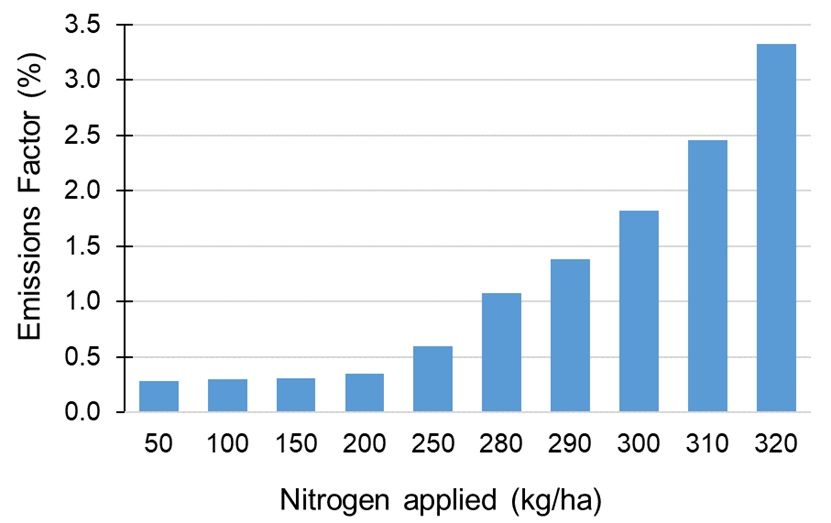
An increase in emission factors contributes to greater N losses with the rate of loss generally increasing because available N (soil N + fertiliser N) is more than the crop needs or can take up. In the sites used for this research, losses started to increase rapidly with N rates of greater than 250 kg/ha (Figure 1).
The requirement for N fertiliser input can be estimated by taking pre-plant soil samples and interpreting Nutrient Advantage lab analysis results with NA Pro. The adequacy of budgeted N rates can be monitored with Petiole N testing and adjusted if required.
To demonstrate how Enhanced Efficiency Fertilisers (EEFs) like eNpower® can protect the nitrogen investment made by growers, Incitec Pivot Fertilisers (IPF) conducted a replicated field study to measure the yield benefit of using pre-plant nitrogen treated with eNpower™ nitrification inhibitor (NI) in cotton and maize production.
Previous research has demonstrated yield benefits when N rates have been reduced or in situations when N losses have occurred due to denitrification and/or leaching.
A field with low soil nitrate-nitrogen levels was selected near Boggabri NSW. The field layout was a 1 metre hill system, irrigated with a centre pivot. 10 cubic metres of chicken manure was spread and incorporated before the hills were formed. The previous crop was chickpeas and potential N contribution was factored into N rates.
Five pre-plant N rates were selected for both the cotton and maize sites. A replicated block trial layout which consisted of 9 treatments with 5 replicates was applied on 6th June 2022.
Soil moisture conditions post N application were conducive to denitrification losses of nitrogen, as some periods during the fallow and post planting received large quantities of rainfall in a few days.
Results for cotton and maize sites are presented in Figures 2 and 3. Both sites were N responsive with yields plateauing at higher N rates.
Cotton lint yields in response to increasing N rate and treatment with eNpower
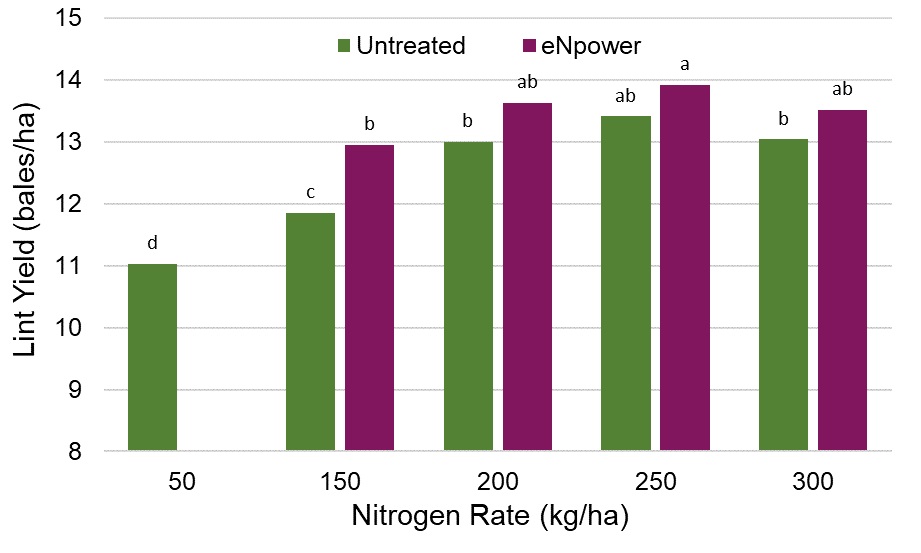
Maize grain yield in response to increasing N rate and treatment with eNpower

Yield results from both cotton and maize sites show that yield can be maintained with a reduction of 50 kg/ha N when treated with eNpower. This aligns with recent research that indicating substantial scope to improve fertiliser nitrogen use efficiency (fNUE) and reduce N losses (nitrous oxide (N20) and di-nitrogen (N2)) in cotton without any impact on lint yield, by adjusting N fertiliser application rates in combination with the use of the nitrification inhibitor DMP, such as eNpower® (Scheer et al, 2022).
EEFs are easily incorporated into fertiliser programs. IPF N based products such as Urea, MAP, DAP and Granulock Blue can be supplied treated with eNpower.
Growers and agronomists are encouraged to start including EEFs in their programs to establish the benefits for their production systems.
Supporting the responsible use of nitrogen fertiliser, IPF continues to invest in the research and development of N recommendation guidelines, new products and technologies backed by locally generated scientific data.
Further Information
For further information, please feel free to contact me on david.mcrae@incitecpivot.com.au or 0477 987 321.
You can also contact:
Bede O’Mara on 0417 896 377 bede.omara@incitecpivot.com.au
Jim Laycock on 0427 006 047 jim.laycock@incitecpivot.com.au
References
Grace, P., Shcherbak, L., MacDonald, B., Scheer, C., Rowlings, D. (2016) Emission factors for estimating fertiliser-induced nitrous oxide emissions from clay soils in Australia’s irrigated cotton industry. Soil Research, 2016, 54, 598–603. http://dx.doi.org/10.1071/SR16091
Scheer, C., Rowlings, D.W, Antille, D.L., Migliorati, M.D.,·Fuchs, K. and Grace, P.R. (2022) Improving nitrogen use efficiency in irrigated cotton production. Nutr Cycl Agroecosyst. https://doi.org/10.1007/s10705-022-10204-6
DISCLAIMER
This is a guide only, which we hope you find useful as a general tool. While IPF has taken all reasonable care in the preparation of this guide, it should not be relied on as a substitute for tailored professional advice and IPF accepts no liability in connection with this guide. Incitec Pivot Fertilisers manufactures and sources fertilisers from other suppliers. The fertiliser supply chain extends beyond the company’s direct control, both overseas and within Australia. Incitec Pivot Fertilisers hereby expressly disclaims liability to any person, property or thing in respect of any of the consequences of anything done or omitted to be done by any person in reliance, whether wholly or in part, upon the whole or any part of the contents of this article.


